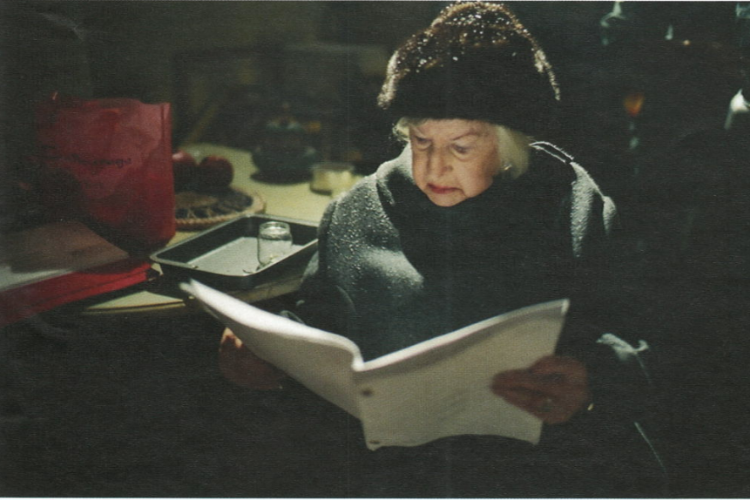
Yiddish Divas Take the Stage
My zayde seemed like the only Jew in Detroit who wore a black hat and coat all the time, was very religious and spoke Yiddish. Friends made fun of him, and I felt ashamed. My former mother-in-law didn’t want my ex-husband to marry me, because to her my family represented everything she wanted to rid herself of. Detroit was middle America in the 1950s and there were many more interesting histories than ours, as well as cultures and art to explore. No one there was particularly interested in Yiddish, so why would I be?
I’ve spent the last three years working on what will be a larger project in film and photography and history (watch for more in Lilith’s pages) immersed in what remains of the Yiddish culture in New York. It’s more than the vast archive preserved at YIVO, Harvard, the Congress for Yiddish Culture, the Folksbiene Theater and the National Yiddish Book Center. I discovered an incredible world filled with great thinkers, brilliant, dazzling and talented women and men. A lot of women, respected for their achievements, stars of literature and theater and film and so much more. Art and literature in the Yiddish genre is about, not separate from, everyday life. These women performers and writers taught me that Yiddish has a unique flair for expression, filled with nuances that no other language can express.
Their works epitomize all that I’ve longed to feel, but haven’t always dared to. Then, I didn’t want to be reminded. Now, I don’t want to forget.
“Our shoresh (roots) are in the lives and works of Yiddish-speaking Jews. You cannot destroy me. I can go two days without eating and nothing would kill me, because my roots are still alive. I would never express myself in the heymish (familiar) way that I do if I hadn’t been born into a Yiddish-speaking family. I want to be remembered, and so should Yiddish be.”
Mina Bern

Mina Bern, in her 90s, has acted in 11 films, including Crossing Delancey. I’m Not Rappaport, and Avalon among others, and brought Yiddish Theater to Broadway. Awarded a Workman’s Circle Lifetime Achievement Award in 1988 and an Obie for outstanding achievement in 1999, she’s a mainstay of American Yiddish theater who has performed for almost 70 years all over the world. Sometimes referred to as “the first lady of the Yiddish stage,” she speaks five languages, but says she’s proud that Yiddish is her “best.” (Photo, 2006)
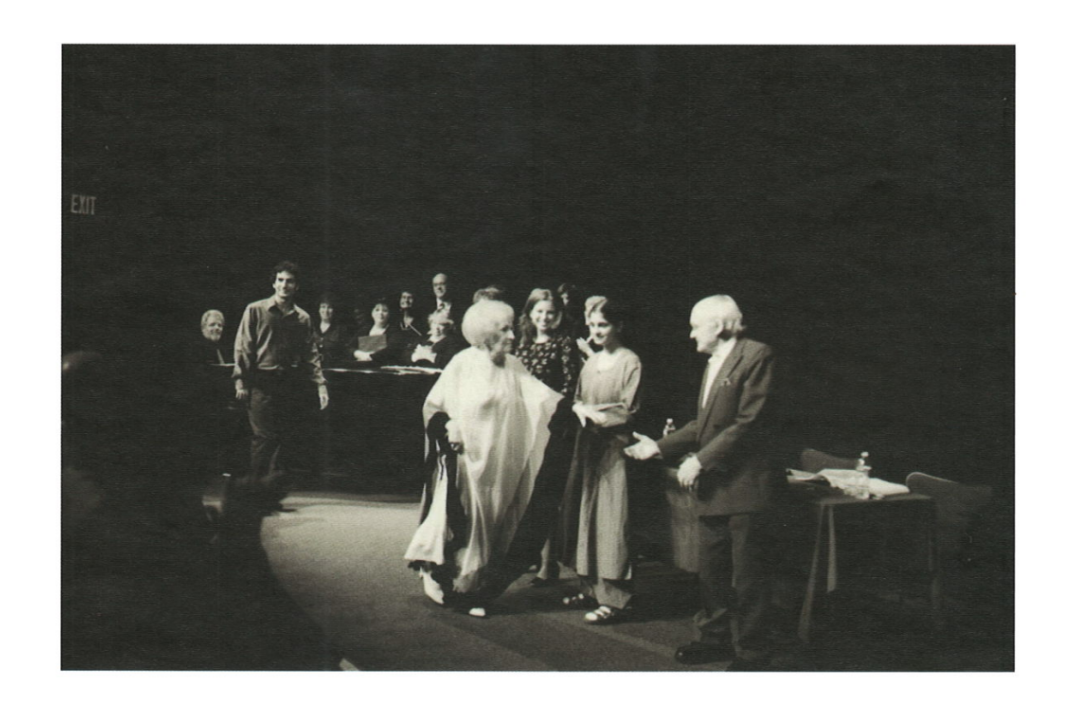
Mina Bern’s dramatic entrance (above, 2004) as Sarah in Abraham Goldfaden’s famous musical. Akeydas Yitskhok (The Binding of Isaac), at the JCC of Manhattan, She says, “Yiddish is such a rich language. As an actress I can convey sorrow, pain, fear and pleasure without having to look for a word,” After a 2006 performance in New Rochelle, New York, the local paper reported that Bern “belted out her Yiddish standards like it was 1955 on the Lower East Side.”
Reviewing the script for the forthcoming film Lift (below, 2006).
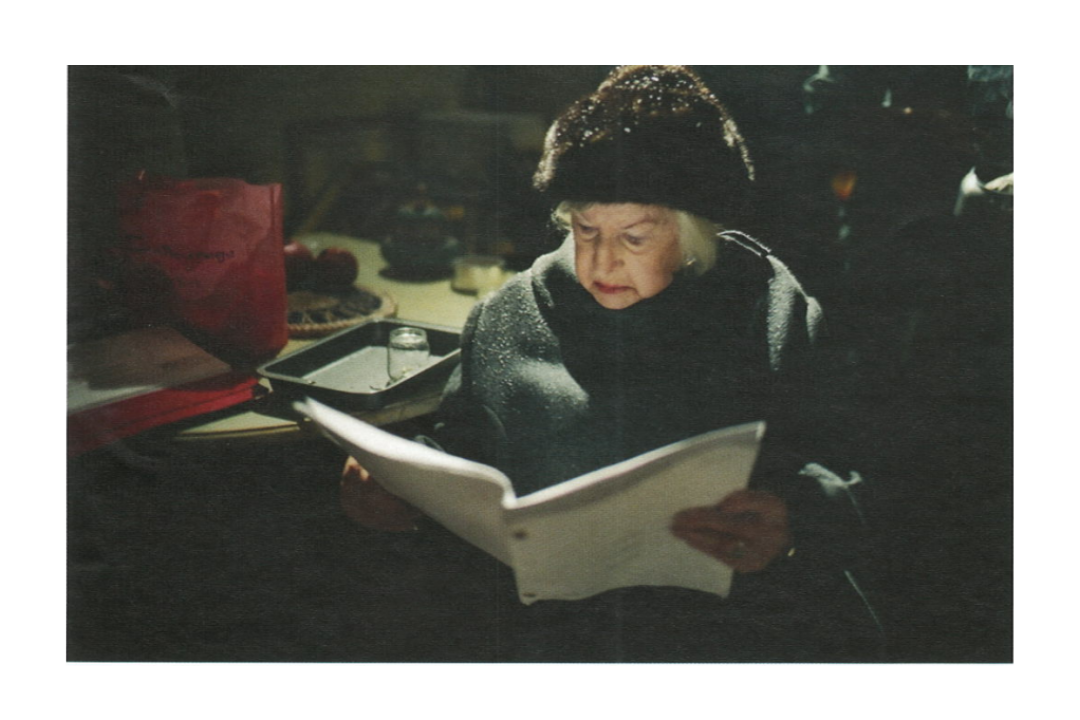
Beyle Gottesman, 86, folkartist, poet and songwriter, in front of her house in the Bronx, which has served for generations as a center for Yiddish intellegentsia. She composed the hauntingly beautiful Yiddish song “Harbstild” (“Autumn”), among many other worlds that have become classics of modern Yiddish music. She received a National Heritage Fellowship from the National Endowment of the Arts in 2005, was inducted into the People’s Hall of Fame in New York City, and was recently honored at New York’s 92nd Street Y, Among her recent projects is a newly-released CD (under the name Beyle Schaecter-Gottesman) of children’s songs in Yiddish, “Fli Mayn Flishlang!” (“Fly, Fly My Kite!”). (Photo, 2005)
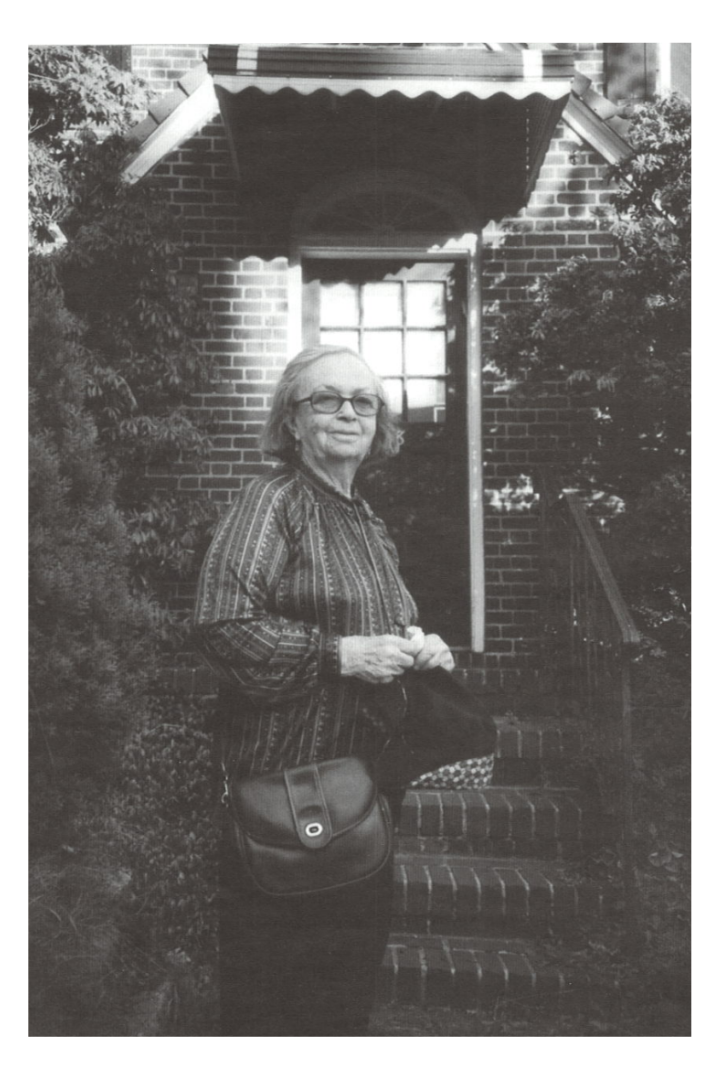
“The battle between Yiddish and Hebrew really began with Herzl. Such distinctions pulled apart even the best of families: my uncle, a Zionist and formidable Hebraist, went to Eretz Yisroel, where he worked in the swamps, contracted tuberculosis and malaria and died; my father remained a staunch Yiddishist, was imprisoned under Communism and killed by the Russians. We have a family tradition to die young for our identity.”
Beyle Gottesman
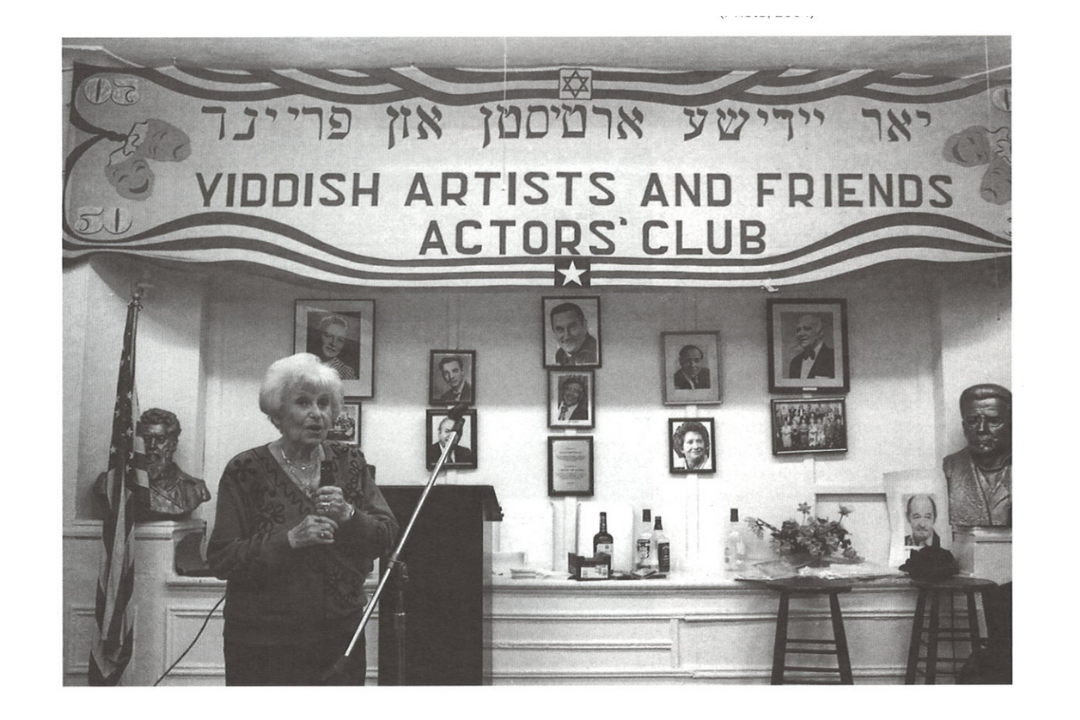
Shifra Lerer, 92, is the first Argentinean Yiddish star to have won an international following, and she has helped bring tango to the Folksbeine Yiddish Theater, Lerer has clayed Broadway and appeared in seven films, including Woody Allen’s Deconstructing Harry. Along with Mina Bern, she was honored on November 20, 2006 by the Congress for Jewish Culture. (Photo, 2004)

Claire Barry is the surviving half of the glam Barry Sisters, stars of the Ed Sullivan Show, When they started to sing as girls, their mother used to say “Do it for Mama,” They were among the first Jewish artists allowed to tour the Soviet Union, and they performed for Israeli troops during the Yom Kippur War, The Barry Sisters popularized a genre known as “Yiddish Swing” and “Bei Mir Bist Du Sheyn.” one of their signature tunes, was a Top 40 hit for years, Esta Lubin Saltzman says, “Their harmony was unreal. The most beautiful you have ever heard.” (Photo, 2006)
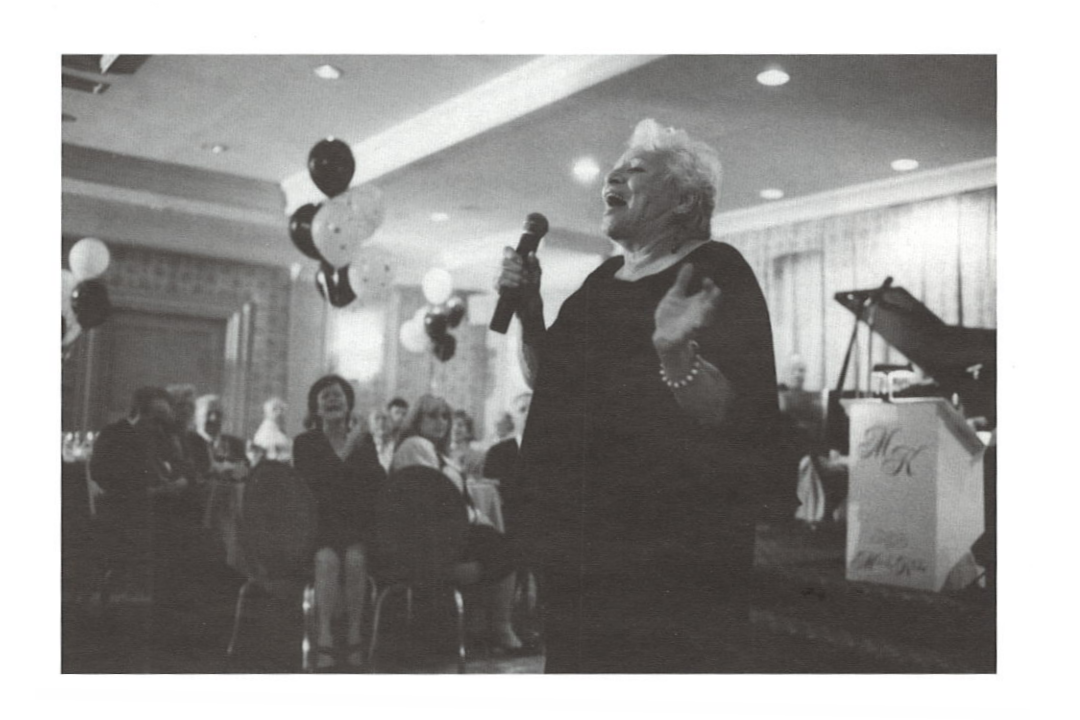
Phyllis Burke has sung in many languages, and appeared on Broadway in “Golden Land,” Yiadish, she says, allows her to connect to an entire Jewish musical and historical legacy. She has also found Yiddish music especially useful in her professional social work, where she would put her face close to her elderly patients’ and sing in Yiddish, causing them to “just come alive” and proving that the life of a Yiddish singer has grit as well as glamour. (Photo, 2006)
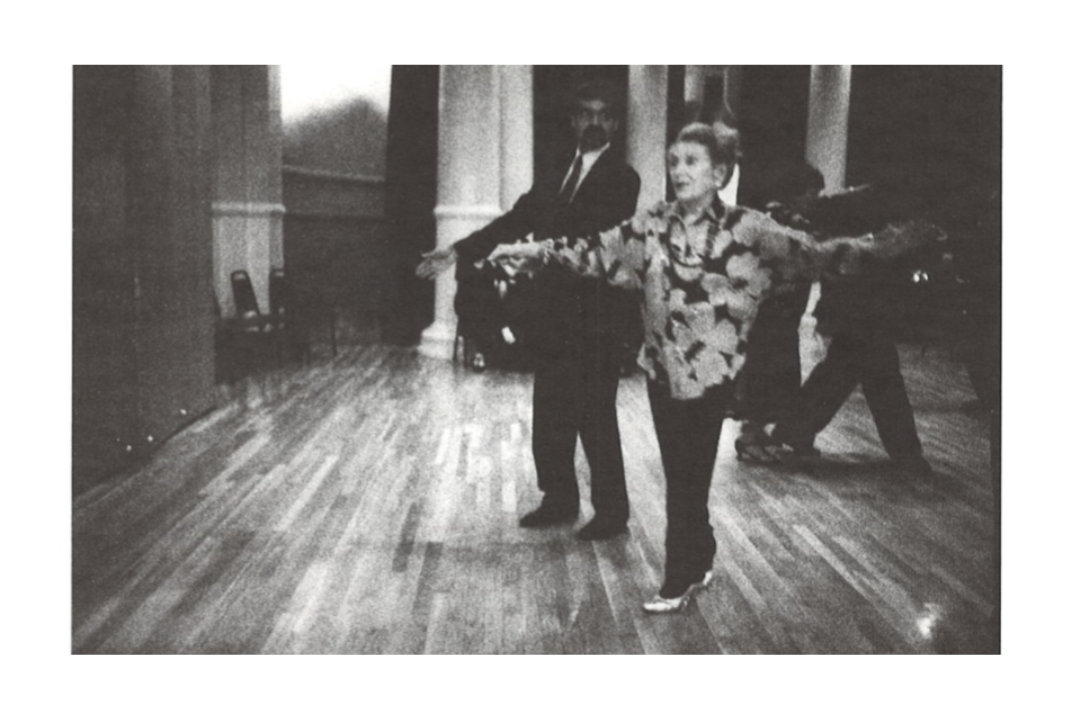
Bel Kaufman, 95, granddaughter of the iconic Yiddish writer Sholom Aleichem, wrote the 1965 bestselling novel Up the Down Staircase. She is an honorary chair of the Yiddish Studies faculty at Columbia University and was recognized by the Folksbiene Theater last year for her special contributions to Jewish culture. (Photo, 2006)
“One Saturday night a lady walked up to the box office and asked to buy tickets. The clerk said, Sorry, Madame, we are sold out. She replied. You don’t understand. Four of us just took a long trip from the Bronx and we want to see the show. When he explained. Sorry, Madame, there is not a single ticket left, the woman walked out with a humph and said. No wonder Yiddish theater is dying.”
Esta Lubin Saltzman
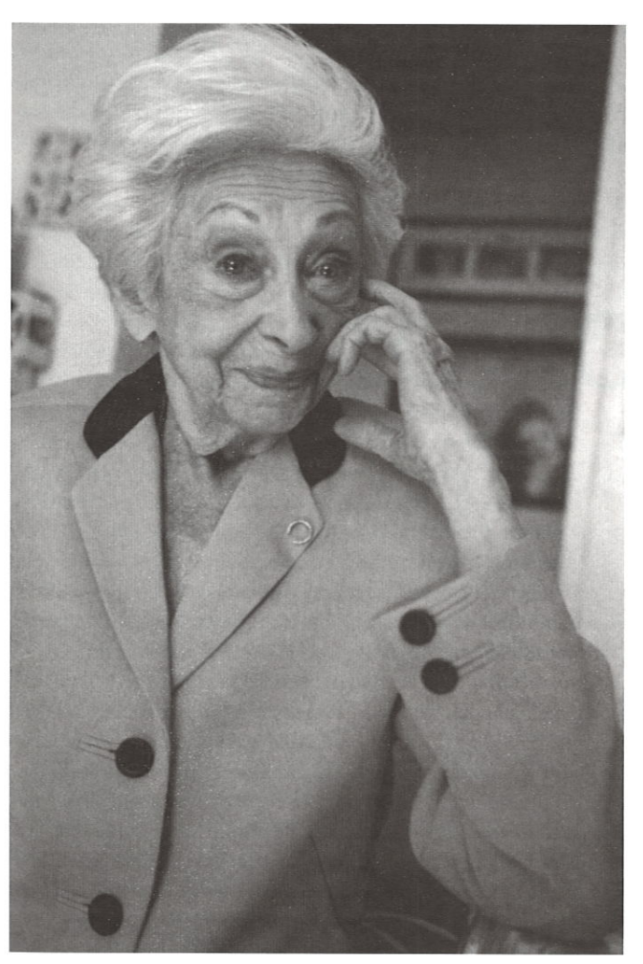
Esta Lubin Saltzman, 92, has been performing on the Yiddish stage for eight decades. During that time she performed as an ingenue with many of the Yiddish theater greats, including Molly Picon (from whom she sometimes stole the show, at least according to one reviewer). In between shows, she would often pass the time listening to the Barry Sisters harmonize in their dressing room. She was a member of the prestigious Hebrew Actors’ Union, the first such union in America. (Photo, 2004)

